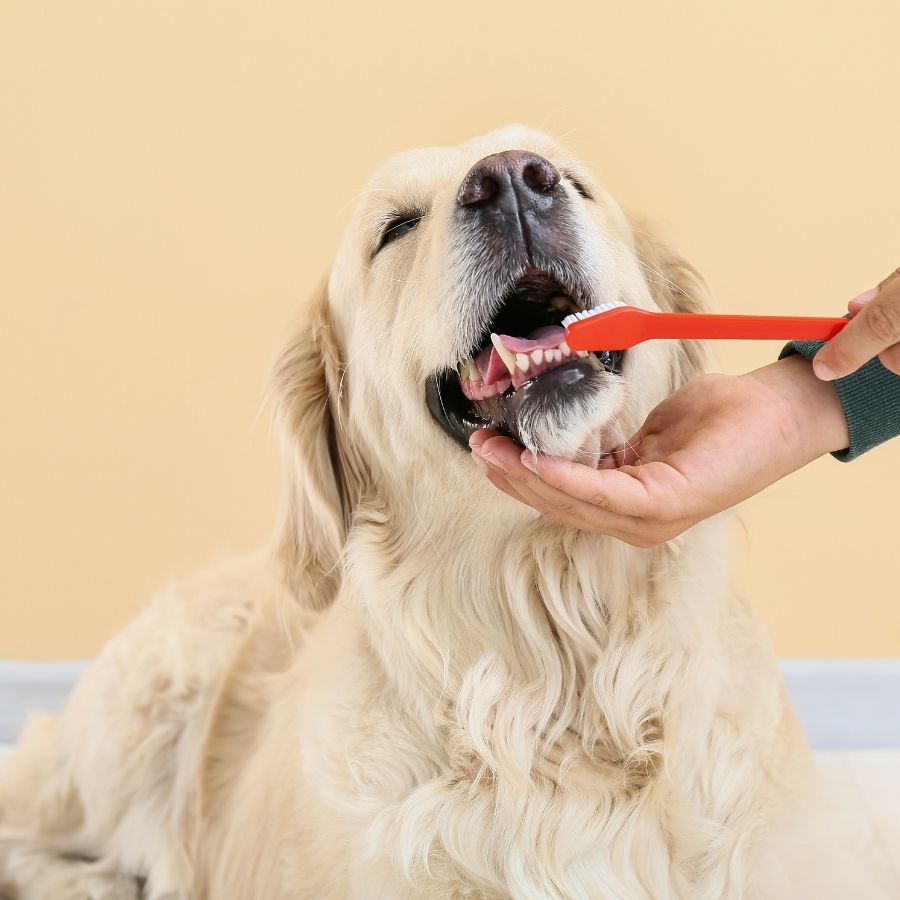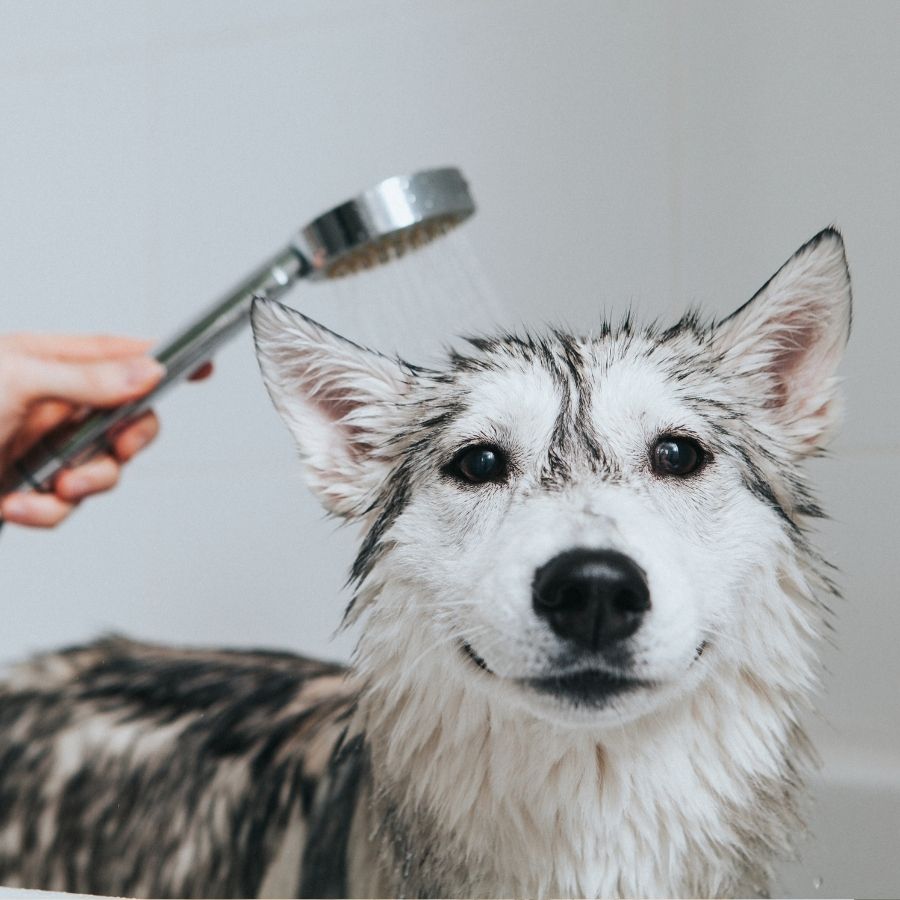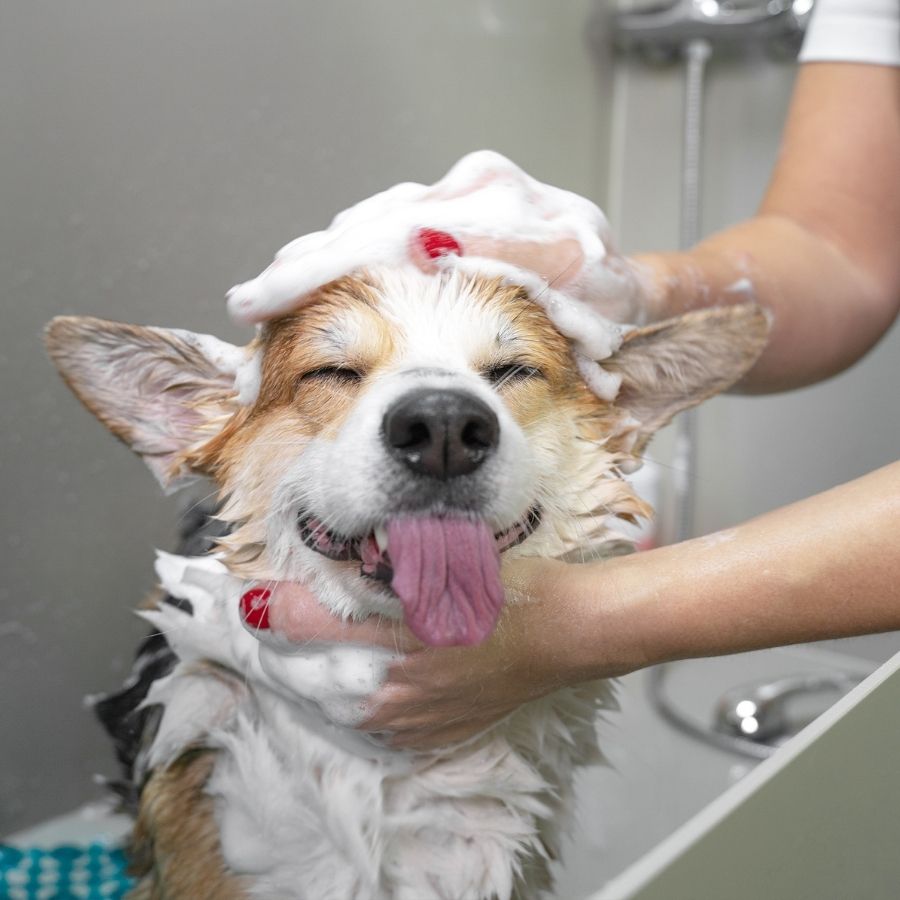Who says a spa day is just for humans? Bath time doesn’t have to be stressful for you or your pup.
DIY dog grooming can be a fun way to pamper your pet, all from the comfort of your home.
Not only will you save money on professional grooming services, but you’ll also create a positive bonding experience through gentle brushing and a relaxing bath.
With the right tools and a step-by-step approach, you can transform bath time into a positive routine that leaves your dog sparkling clean and happy.
Step-by-Step Guide to Bathing and Brushing Your Dog
Let’s face it: professional grooming can be expensive. But that doesn’t mean your furry best friend has to miss out on a pampering session!
DIY dog grooming offers a budget-friendly alternative that keeps your pup clean and healthy and strengthens your bond.
However, a successful DIY spa day requires more than just grabbing the shampoo. Here’s a detailed breakdown to transform bath time into a stress-free bonding experience for both of you.
Pre-Bath Prep: Brush Away the Blues

The Great Detangle: A thorough brushing session is essential before water enters the picture. It removes loose hair, prevents mats from tightening during the bath, and makes the whole process more comfortable for your dog. Use the right brush for your pup’s coat:
Short & Smooth: A slicker brush with fine bristles glides through fur, removing loose hairs and preventing static.
Long & Luxurious: A de-matting comb with long, rotating teeth helps tackle tangles gently without pulling.
Double Coat Champions: A shedding rake with widely spaced teeth digs deep to remove excess undercoat, reducing shedding throughout the house.
Nail Navigation (Optional): While not necessary for every bath, this is a prime opportunity to trim overgrown nails. Invest in dog-specific nail clippers and familiarize yourself with the anatomy of the dog’s nail.
The quick, pink area containing nerves and blood vessels should be avoided. If trimming nails seems daunting, save it for a separate session to avoid bath time anxiety.
Bath Time Bliss: A Step-by-Step Soak

Gather Your Grooming Arsenal: Preparation is critical to a smooth bath time. Here’s your checklist:
Gentle Dog Shampoo: Choose a formula suited to your dog’s coat type, whether it’s sensitive, hypoallergenic, or needs itch relief. Opt for a tearless formula to prevent eye irritation.
Conditioner (Optional): Conditioner adds moisture and manageability to long or curly coats.
Washcloth: A soft washcloth comes in handy for cleaning the face.
Dog-Friendly Towels: Microfiber towels are exceptionally absorbent and gentle on wet fur.
Rinsing Cup: A plastic cup allows for controlled rinsing, preventing water from splashing into your dog’s ears.
Non-Slip Mat (Optional): A rubber mat in the tub or shower provides much-needed traction, preventing slips and falls.
Temperature Tune-Up: Fill the bathtub or sink with a few inches of lukewarm water – comfort is key! Test the temperature with your wrist; it should feel warm, not hot.
Wet, Lather, Rinse, and Repeat: Gently wet your dog’s fur, working your way from back to front. Avoid getting water directly in their ears or face.
Apply a dollop of dog shampoo and massage it into a rich lather, particularly in areas prone to dirt buildup, like paws, armpits, and under the tail.
Remember, human shampoo is a big no-no, as it can irritate your dog’s skin. Rinse thoroughly with lukewarm water, ensuring all shampoo is gone. For a deeper clean, repeat the process, especially for double-coated breeds.
If you opted for conditioner, follow the same lather-rinse routine after shampooing.
Facial Focus: Dip your washcloth in clean water and gently wipe your dog’s face, avoiding the eyes. You can use a moistened cotton ball to clean any tear stains around the eyes.
The Drying Debacle: Wrap your pup in a luxurious dog towel and gently pat them dry. For long-haired breeds, a microfiber towel is particularly effective at absorbing moisture.
You can use a dog-specific blow dryer on a low, relaxed setting to speed up the drying process. However, be mindful of the noise; some dogs find blow dryers scary.
Bonding beyond the Bath
Shower them with praise and affection after your pup is sparkling clean and dry. Reward them with their favorite toy or a delicious treat for being such a good sport. This positive reinforcement helps create a happy association with bath time, making future grooming sessions a breeze.
FAQS
Q: Should I brush dog before or after bath?
A: Brush your dog before the bath! Brushing removes loose fur and tangles that worsen with water. A clean coat is easier to brush afterwards, leaving your pup sparkling and tangle-free.
Q: What is the best bath routine for a dog?
A: The best bath routine depends on your dog’s fur. Short-haired pups might only need baths every 1-2 months, while long or double-coated friends may need them more often. Always use lukewarm water and dog shampoo, and consult your vet if your pup has sensitive skin or swims in mud puddles regularly.
Q: Can I use human shampoo on my dog?
A: Skip the human shampoo! It disrupts your dog’s natural skin oils and can irritate. Opt for a gentle dog shampoo formulated for their unique pH balance. Their skin will thank you for it!
Q: Is Dove soap safe for dogs?
A: Dove soap isn’t ideal for dogs. It can be harsh on their skin, stripping natural oils and causing dryness or itchiness. Stick to dog shampoo made for their specific pH balance to keep their coat healthy and happy!
Q: Can you use human toothpaste on dogs?
A: Absolutely not! Human toothpaste contains ingredients harmful to dogs. Fluoride in toothpaste can be toxic, and some contain xylitol, an artificial sweetener that’s dangerous for dogs. Stick to toothpaste made specifically for pups to keep their smile safe!
Q: What is the best dog shampoo?
A: Unfortunately, there’s no single “best” dog shampoo, as it depends on your dog’s specific needs. Consider factors like coat type (short, long, and double) and skin sensitivity. Oatmeal shampoos are great for itch relief, while hypoallergenic options are gentle on sensitive pups. Always consult your vet for personalized recommendations!
Q: How to make homemade dog toothpaste?
A: DIY dog toothpaste is an option! Mix equal parts baking soda (for cleaning) and coconut oil (for taste) for a paste. Skip human toothpaste – it’s harmful! Ask your vet before using; remember, it’s a treat, not a replacement for vet dental care.
Q: How can I clean my dog’s mouth naturally?
A: While brushing with a dog-approved toothpaste is ideal, natural options can help freshen breath and fight plaque. Try offering your pup dental chews, raw carrots, or letting them gnaw on a natural rubber chew toy. These can help scrape away tartar buildup. Remember, these are temporary solutions – consult your vet for regular dental cleanings!
Q: Do dogs need conditioner?
A: Dogs don’t necessarily need conditioner, but it can offer benefits! Long-haired or curly pups might especially enjoy the detangling and smoothing properties. Conditioners can add moisture and relief if your dog has dry, itchy skin. Skip it for short-haired breeds unless they have specific coat concerns.
Conclusion
With some planning, patience, and knowledge from this guide, DIY dog grooming can become a routine you and your furry friend can enjoy.
Your pup will feel clean and pampered, and the process will strengthen your bond through positive reinforcement and gentle handling.
So grab your dog’s favorite brush and some dog-friendly shampoo, and prepare to create a spa day experience in your home!
